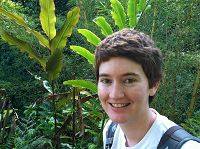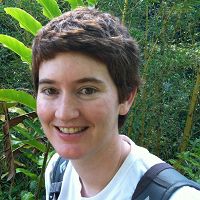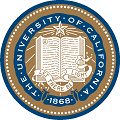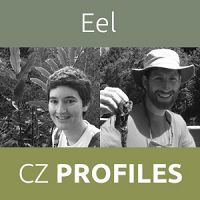Critical Zone Profile - STEPHANIE CARLSON (fish biologist, associate professor)
Stephanie Carlson studies the ecology of stream fishes, with a focus on Pacific salmon and trout at the southern end of their range in California. These populations experience vastly different conditions than northern populations. Populations of Chinook salmon, endangered Coho salmon, and threatened steelhead trout once returned in great numbers to the Eel River but, today, their populations are in decline in the Eel and throughout California. Causes of their declines are many but include reductions in summer base flow and elevated temperatures.
The base flows that sustain salmon and trout during the summer dry season are entirely supported by groundwater discharged from the critical zone. As part of the Eel River Critical Zone Observatory, Carlson and her colleagues are studying thresholds for salmonid mortality and performance during the summer dry season in several areas that differ in critical zone inputs.
“The patterns of stream flow and runoff, and the path that water takes into streams, have profound consequences for aquatic ecosystems and people. Our work aims to connect the dots between the critical zone discharge to river ecosystems, how critical zone inputs alter stream temperatures, and the consequences for stream fishes.” – Stephanie Carlson
California’s Mediterranean-type hydrological systems experience strong seasonality and interannual variability, with profound impacts to aquatic systems. During summer base flow periods, the stream network contracts, decreasing water depths and reducing habitat for stream biota. During the wet winter, the river ecosystem expands, increasing connectivity between mainstem rivers and small tributary breeding habitats. The spatial pattern of wetted habitat, as well as the quantity and quality of wetted habitat, all have consequences for fish and other aquatic biota.
We are interested in how water moves through the critical zone and out to river ecosystems. During California’s summer drought season, the Eel River’s baseflow is supported entirely by ground water discharge from the critical zone, a likely bottleneck period for salmon and trout rearing in the Eel River. Because our study has coincided with a multi-year drought in California, there are additional questions related to the long-term legacies of multi-year droughts on the aquatic ecosystem that we aim to address though our research.
The most exciting aspect of this work has been the opportunity to contribute to science that spans disciplinary boundaries to tackle pressing questions with societal relevance.
Holding one of the dominant fishes at the Eel River CZO, the threatened steelhead trout (Oncorhynchus mykiss).
The CZO network provides opportunities to understand which results are system-specific and which results transcend the particulars of a given location. The network thus holds considerable promise for identifying general lessons and results that ultimately can be used to guide management and policy of natural resources. Travel grants to facilitate cross-CZO exchange and idea pollination would help to strengthen research coordination and the impact of the larger CZO Program.
Our CZO team is committed to sharing our work with the research community, management community, and the local Eel River community. I do this by sharing our work through peer-reviewed (open access, when possible) publications, through talks at scientific conferences and regional meetings, and by developing collaborations and relationships with local resource managers and watershed residents.
:: By Linda Copman, staff writer ::
Processing a trout in the field.
Holding one of the dominant fishes at the Eel River CZO, the threatened steelhead trout (Oncorhynchus mykiss).
Related News
Explore Further







